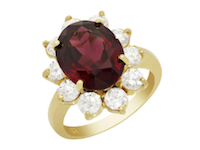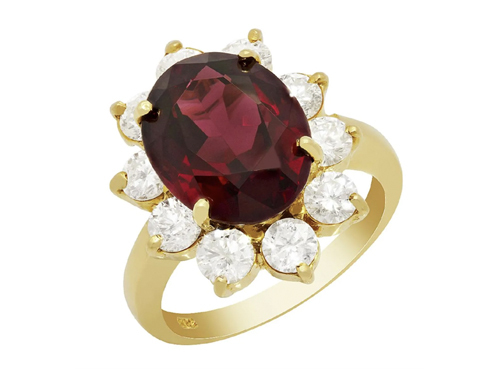
NEW YORK — Diamonds may be a girl’s best friend, but garnets delight jewelry wearers of any age or gender. While garnets can be yellow, orange, blue or green, the most common and preferred shade for the stone is blood red.
Garnets have been used in jewelry dating back to ancient Rome and Greece during the Bronze Age. Being a hard stone, they were easy to cut. The Egyptians also featured garnets in jewelry, as they ascribed healing powers to the stones and relied on them as a symbol of protection. The gemstones were found in abundance in Europe but particularly in the Czech Republic, which became known for its Bohemian garnet jewelry.
Today, garnets are still widely used in both fine and costume jewelry, and hold the honor of being the birthstone for January. Necklaces are an especially effective showcase for clustered garnets, which evoce the appearance of nestled pomegranate seeds. The stone’s facets are typically given a rose cut to add shine, and placed in pave settings to highlight the gems rather than the metal.
Almandine garnets are red garnets that match the color of a full-bodied red wine, and they are, unsurprisingly, sought after. A 14K gold 7.81-carat almandine garnet and diamond ring achieved $52,000 plus the buyer’s premium in July 2018 at Riverside Galleries.
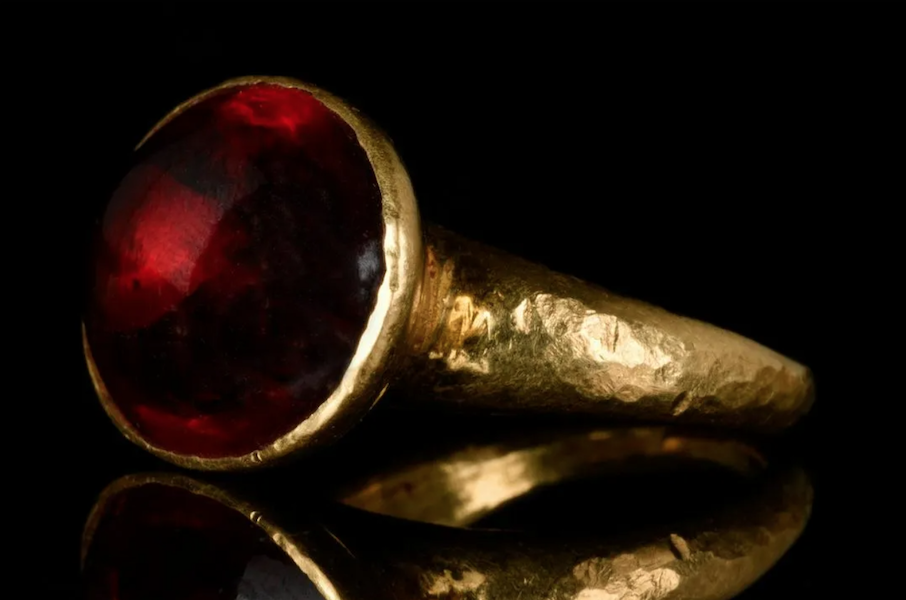
While contemporary designs are plentiful, ancient garnet jewelry is greatly coveted. In earlier centuries, noble or wealthy men sported large rings with gemstones as status symbols. A medieval gold and garnet ring from the Merovingian dynasty, dating to circa 500-700 A.D., made $13,000 plus the buyer’s premium in May 2021 at Apollo Art Auctions.
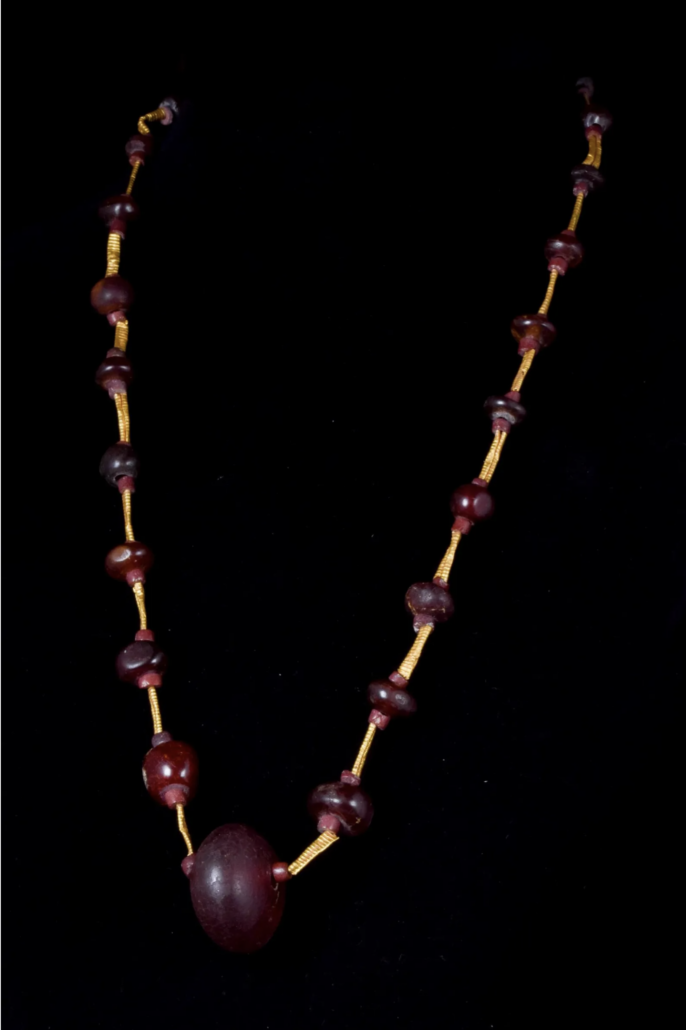
A circa 323-27 BC Hellenistic necklace composed of garnet beads and gold tubes was auctioned by Apollo Art Auctions for £4,700 ($5,362) on July 24, 2022. With rope-like incised decoration, the necklace was created to a high standard befitting the beads, which are striking and vibrant. After Alexander conquered the Persian empire and seized its fantastically rich treasures, vast quantities of gold passed into circulation and the appetite for intricate gold and gem-set jewelry exploded. A necklace of similar style to the one shown here is in the collection of The Victoria and Albert Museum in London.
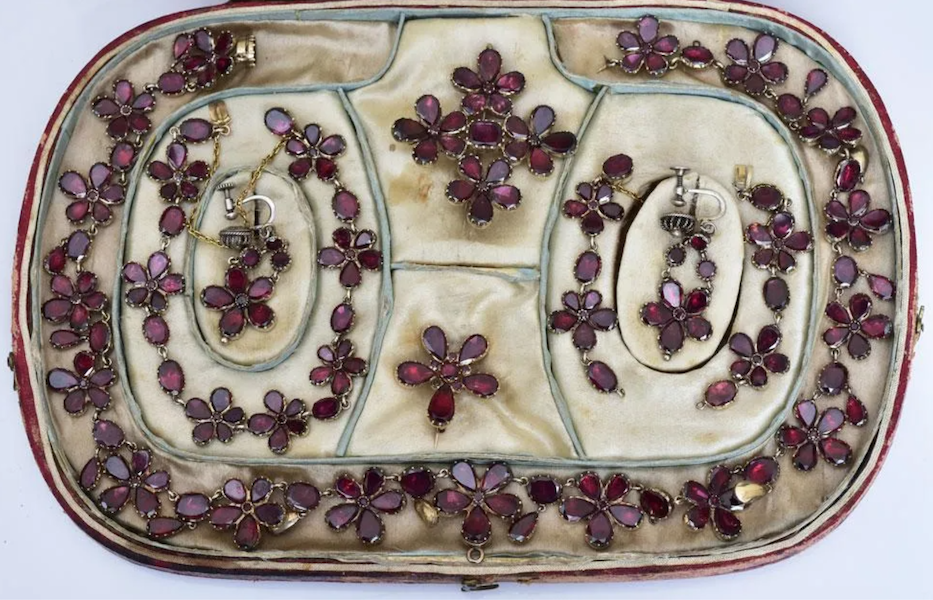
While 14K and 18K gold are most commonly used in jewelry today, in previous eras, 15K gold was standard. As the gold’s natural hue often darkened slightly with the passage of time, it complemented garnet stones admirably. A fine example is a Georgian English 15K gold garnet necklace suite that brought $4,000 plus the buyer’s premium in September 2019 at Fairfield Auction, LLC. The style of this suite presaged the Victorian-era popularity of cluster-like garnet jewelry with smaller stones forming larger flower-head clusters.
The golden age of garnet jewelry is said to have been the late 18th and early 19th century, when garnets were fashioned into artfully set suites typically made up of a necklace, earrings and a brooch. The suite mentioned above has an added bracelet, a removable cross-shaped pendant and a smaller flower-head pendant. By the 19th century, Renaissance-inspired jewelry featuring vibrantly colored gemstones was all the rage, and garnets appeared in the daring designs coming from the finest jewelry houses.
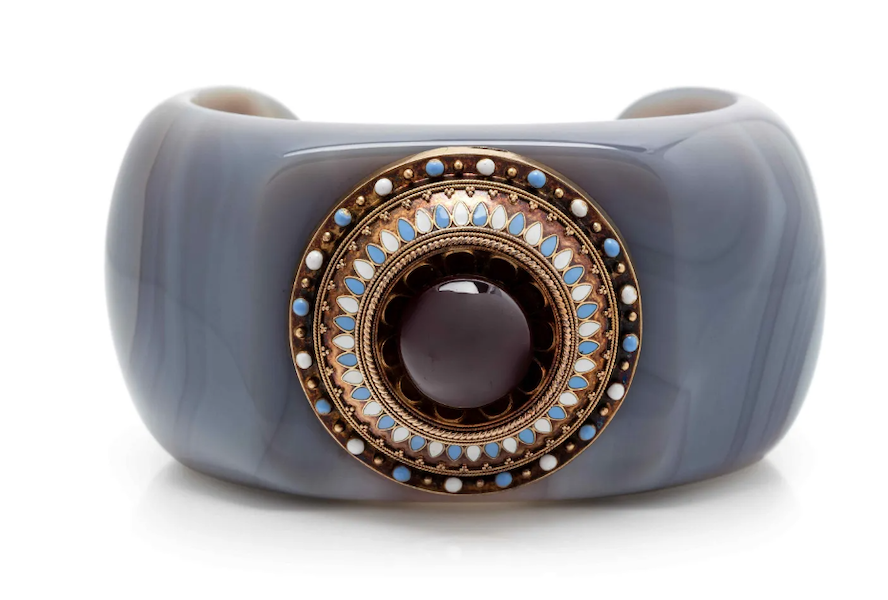
In the 20th century, many designers and brands continued to create statement pieces using garnets, such as a Verdura agate, garnet and enamel cuff bracelet centered with a large round cabochon garnet, which realized $15,000 plus the buyer’s premium in September 2021 at Hindman.
Garnets are just as popular as they ever were, if not more so. Belief that the stone has healing powers and aspirational properties has faded, but some moderns insist those that have the prized blood red hue are connected with love and the life force. Garnet jewelry can be found at all price points and all varieties of designs, from subtle to bold.


